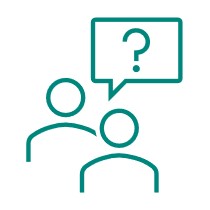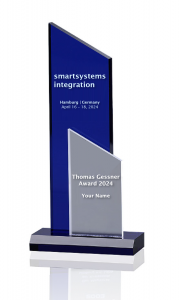On this page our speakers receive all information about the call for papers, submission deadlines, schedule for scientific contributions, submission options, the selection process, oral and poster presentations, the conference tracks, the SSI Awards as well as speaker tickets and hotel rooms. The most important questions are answered under FAQ for authors.
Deadlines
Abstracts submission deadline: January 10, 2025
Deadlines for scientific papers:
▪ Selection by committee: January 24, 2025
▪ Submission of full paper: February 28, 2025
▪ Peer review: March 22, 2025
▪ Revision revised paper: April 5, 2025
Submission opportunities
There are two opportunities for papers.
1. Scientific papers can be submitted for publication in IEEE Explore®. Full scientific papers (min. 4 pages) undergo a rigorous peer review process.
2. Industry and European Projects are specifically encouraged to submit papers. There is no full paper required, but it is possible to publish a non-scientific paper in the conference proceedings, exclusively.
Selection Process
The committee will review all the abstracts. Submitted abstracts are selected for oral or poster presentation. Conference proceedings will be available online.
Oral and Poster Presentations
To highlight the networking aspect, special focus is put on a centrally dedicated poster session and selected oral presentations in two parallel tracks. The conference app guides you through the conference and enables you to give feedback on the current presentation. All scientific oral and poster presentations will be included in the conference proceedings. The proceedings will be additionally published online and open access.
TRACKS
- Track 1:
- Technologies for smart system integration
This track contains relevant technologies and technology platforms for the integration of smart systems from TRL 2 to TRL 6:
- Novel sensor concepts, e.g. mechanical sensing, chemical sensing, quantum sensing, photonics, magnetics, fluidics, etc.
- Functional materials for hetero integration and packaging, e.g. photonic integration, wide bandgap semiconductors
- Hetero integration of components, e.g. chiplet (integration) technologies, 2.5 and 3D integration and advanced packaging
- Sustainable and green smart systems, e.g. substition of toxic process materials, alternative raw materials, re-use of recycled materials and components (9R strategies)
- Perspectives of system integration technologies, e.g. in the context of European facilities such as Chips JU pilot lines
- Track 2:
- Cross-sectional technologies for Smart Systems
This track covers cross-sectional technologies for smart systems concerning hardware and software:
- Design and test methods, such as design for test, safety, security and/or sustainability
- Artificial intelligence and software-based solution for data acquisition, intelligent processing and fusion as well as communication at the edge (Edge AI hardware, algorithms, AI application challenges, human acceptance)
- Reliability and safety (technologies, methods and concepts for reliability, safety, privacy and security)
- Cybersecurity, such as hardware security components, fabrication, software security, system and IoT security
- Track 3:
- Application Domains
This track covers the most relevant application domains of smart systems with a TRL level of min. 6, but prior to product stage. Presentations discuss technological solutions for application driven challenges in the fields of:
- Mobility, e.g. automotive, maritime, rail, aerospace…
- Energy
- Industry
- Agri food and natural resources
- Biomedical and wellbeing
- Environmental monitoring
- Focus Track 4
- Integration for quantum systems and quantum computing
This track comprises integration challenges of quantum systems and quantum computing units. It deals with:
- Design, fabrication and test of components for the use of quantum effects (e.g. based on trapped ions, neutral atoms, solid state spins, color centers, superconducting qubits or entangled photons,…)
- Low-temperature and cryogenic challenges, challenges connected with operation in UHV (e.g. temperaturestable sealing and packaging, material compatibility, outgassing, reliability, operation aspects)
- Integration of functional materials and components (e.g. superconducting materials, light sources, heterogenous material approaches…)
- Managing of the complexity of quantum systems in terms of scaling and heterogeneity
- Software-based solutions and AI
Please submit your abstract including a short motivation, a summary of your technical main results and how they were achieved and conclusions (500 words).
Abstracts should concisely report the aims and outcomes of your research. Your abstract should be fully understandable on its own to someone who hasn’t read your full paper or related sources.
Speaker tickets and hotel rooms

All information on booking speaker tickets and discounted hotel rooms in Prague can be found under the menu item Participants .
There will be 3 Speaker Award Winners at SSI 2025!
While the best poster is selected by all conference participants and announced at the end of the conference, the Best Paper Award winner is nominated by the committee. The award winner will be selected from 7 to 10 candidates based on their paper and will be announced a few weeks after the conference. The award will be presented to the winner at the next Smart Systems Integration Conference.
Best Paper Award
The Best Paper Award of the SSI, which took place in Hamburg from 16-18 April, 2024 goes to Diing Shenp Ang from the Nanyang Technological University in Singapore, for his paper „Silicon FET Reservoir for Dynamic Edge Vision“. The paper impresses with an impressively simple approach to using hysteresis in SI FETs for hardware-based and highly efficient image and video classification. Professor Ang follows last year’s winner Tom Enderlein from the Center for Microtechnologies at Chemnitz University of Technology with the Best Paper Award 2023 for his contribution „Hollow Microneedle Fabrication and Characterization for Interstitial Fluid Extraction in Minimally Invasive Sensors“.
Best Poster Award
The most exciting poster contribution will be chosen by the conference participants directly on site. Last year’s winner was Ahmed Shaaban from Infineon Technologies Munich for his poster „Resonate-and-Fire Spiking Neurons for Target Detection and Hand Gesture Recognition: A Hybrid Approach“.
Thomas Gessner Award
The Thomas Gessner Award was presented for the fifth time. The award went to the young scientist Marieke Stapf from TU Bergakademie Freiberg for her excellent contribution „Integration of Lignin Hydrogel on Suspended Gate FET Structures for a New Type of Chemical Sensor“. The associated keynote presentation showed in a comprehensible way how field-effect transistors can be used for gas sensor technology and deals experimentally with the parameters of gas sensor technology (sensitivity, selectivity, response behavior and service life). The result of the work thus forms a building block for smart systems.
The „Thomas Gessner Award“ is endowed with 1,500 euros and the winner receives free participation in the conference in addition to the prize money.
Thomas Gessner Award
Author FAQs

- What is a good abstract?
A good abstract raises clear expectations on the kind of results, but it should not contain results, yet.
It should be interesting to the SSI community in general and addresses the scope of the conference (track).
It should be written clear and concise. - How is my abstract rated?
Your abstract is evaluated among the folloqing criteria:
* Innovation (30%)
* Technical Content (as far as applicaple, 30%)
* Relevance - Addressing the Scope of Conference (30%)
* Writing style, structure, language skills (10%)
with four marks "excellent", "good", "average", and "poor".You won't see the rating, but referees are encouraged to give a short feedback about the abstract.
- Am I eligible to publish a full / journal paper?
Each accepted submission, poster as well as oral presentations, are eligible to submit a paper to the conference proceedings.
You have two choices: You may
* submit a technical / scientific paper (which involves an in-depth peer-review), which will appear on IEEE (2022 example: https://ieeexplore.ieee.org/servlet/opac?punumber=9901388 ).
* submit a strategic contribution, a non-scientific paper or a scientific work of early stage (without peer review), which will only appear in the proceedings (2022 example: https://doi.org/10.24406/publica-541). - Do I need to publish a full / journal paper?
There is no need to publish a journal paper, but if you wish to disseminate your work, there are two options:
* Scientific papers can be submitted for publication in IEEE Explore (2022 example: https://ieeexplore.ieee.org/servlet/opac?punumber=9901388). Full scientific papers (min. 4 pages) are subject to a rigorous peer review process.
* It is possible to publish a non-scientific paper exclusively in the conference proceedings (2022 example: https://doi.org/10.24406/publica-541). - How is my full paper rated?
Your full paper is evaluated among the folloqing criteria:
* Innovation (30%)
* Technical Content (as far as applicaple, 30%)
* Relevance - Addressing the Scope of Conference (30%)
* Writing style, structure, language skills (10%)
with four marks "excellent", "good", "average", and "poor".You won't see the rating, but referees are encouraged to give a feedback about the full paper for improvement including a clear indication about the status of acceptance.



